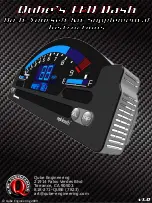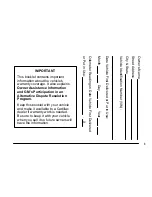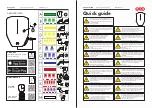
4.8 Electronic Engine Controls
CAUTION: Do not make any additional
connections to the electrical circuits
associated with the engine management
system.
NOTE:
It is not necessary to disconnect or remove
engine management modules.
4.8.1 Start-Stop
WARNINGS:
The engine may restart automatically if
required by the system. It will only
automatically restart when one of the
pedals is pressed. If no pedal is pressed,
the Start-Stop indicator will flash and a
message will be shown in the display.
Switch the ignition off before opening
the hood or carring out any maintenance.
Always switch the ignition off before
leaving your vehicle, as the system may
have shut down the engine but the
ignition will still be live.
The system may not funtion if you leave
additional loads connected with the
ignition off.
It is very important not to make any modifications
to the shielding around exposed moving parts on
the engine, such as the drive belt.
General Information
Start-Stop is designed to improve fuel economy
and reduce CO
2
emissions by automatically
stopping the vehicle's combustion engine during
idle phases when it is not required for motive
power, and restarting it when required.
Start-Stop Logic
Automatic engine stops and restarts are
controlled by the Start-Stop logic within the ECM
(engine control module), known as the Start-Stop
scheduler. This is connected to a number of
vehicle and powertrain signals, sensors and
switches and decides when to shut down and
when to restart the engine, based on the particular
Start-Stop strategy employed. Stop-in-Neutral
is a Start-Stop strategy applicable to manual
transmissions which stops the engine, subject to
inhibitors, whenever the vehicle is stationary AND
neutral is selected AND the clutch has been fully
released. The engine is restarted on clutch pedal
press in neutral.
Inhibitors
Sometimes the engine may not shut down or
restart, due to one or more system inhibitors being
active. The engine will shutdown only once all
inhibitors are cleared, which maybe some time
after the transmission is shifted to neutral and the
clutch pedal is released.
Typical examples of inhibitors are:
•
Ambient temperature above temperature limit
for Start-Stop (40°C).
•
Engine coolant temperature not warmed up
(value dependent on ambient temp).
•
Heated screens are on.
•
Insufficient battery charge to sustain a stop
event or too high a current drain or battery is
cold or battery failure.
•
Driver's door has been opened and vehicle has
not been driven over 5 kph since.
•
Engine management reason, for example:
during a cDPF regeneration event.
•
The ABS warning lamp is on.
•
High electrical load where total vehicle current
A drain exceeds 50 Ampere.
•
Ford Engine RPM (Revs Per Minute) Speed
Controller System is active.
•
Un-recognized batteries fitted or BMS
damaged or removed.
•
ECO button is pressed (LED illuminated).
•
Accelerator pedal or clutch pedal is not
released.
•
Greater than 100mA continuos load on each
battery at ignition off. The BMS will be unable
to correctly assess battery state of charge.
•
Vehicle in Factory or Transport mode.
Stall Recovery/Start Abortion Recovery
Stall recovery is an additional feature available
with start-stop, and is active even if start-stop
itself has been deselected or is inhibited. Under
stall recovery, an automatic engine restart is
invoked if the clutch pedal is fully depressed
immediately following a vehicle stall, thus
enabling the driver to quickly recover from a stall
condition without needing to cycle the ignition
key/start-button. Stall recovery is only available
for 5 seconds following a stall.
Date of Publication: 04/2012
FORD
TRANSIT CUSTOM
2012.75
4 El
ec
tric
al
97
















































